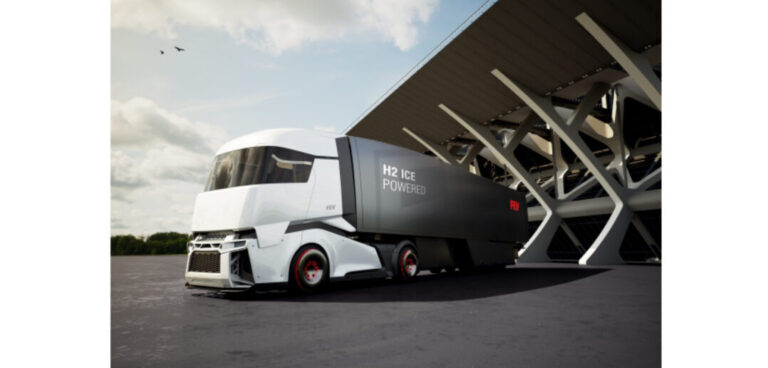To help OEMs meet regulations for CO2 emissions created by new heavy-duty commercial vehicles and improve average vehicle range, FEV has developed a range of solutions combining targeted navigation with assessed energy use, such as driving modes and routes for recuperation and recharging.
Regardless of the drive type, FEV predicts that trucks of tomorrow will be characterized by predictive control concepts based on vehicle networking, and so is currently developing solutions that monitor driving style in real time by collecting and evaluating parameters and infrastructure data through both 4G and 5G mobile networks.
“By combining targeted navigation with assessed energy use, such as driving modes, routes for recuperation or recharging at the charging point, the average range of commercial vehicles can be increased by double-digit percentage points. Sub-functions such as online estimation of actual vehicle mass and measurement of individual driving style also enable the prediction algorithms to be highly precise,” commented Stefan Pischinger, CEO of FEV. “In the future, it will become quite natural to include not only driving and resting times, but also the recharging time in logistics and route planning.”
In addition to monitoring driving style, FEV has been utilizing computational fluid dynamics (CFD) to improve aerodynamic attributes of battery electric trucks that require less cooling at the front of the vehicle. The CFD development has enabled the cabin size to be increased, while drag has been reduced by up to 10%, resulting in less energy consumption and an increased electric range.
With many vehicles of the future expected to be battery-electric, fuel cell powered or powered by a hydrogen combustion engine, FEV states it will carry out new methods of complete vehicle development.
“Our customers appreciate the holistic vehicle development from a single source, and the associated time and cost advantages; especially when it comes to meeting new emission requirements,” said professor Pischinger. “FEV has the expertise and resources to bundle its competencies across disciplines, in order to deliver the optimal sustainable vehicle solution in accordance with the customer’s interest.”
To address the requirements of battery-electric trucks for example, FEV has developed a scalable modular battery system that enables the integration of existing and homologated batteries from the passenger car sector. A battery management system (BMS) was also developed to coordinate the individual batteries. Alongside this, FEV has developed Cell-to-Pack packaging concepts that allow for a higher energy density at the battery level to increase the long-distance suitability of commercial vehicles.
FEV has also developed a range of solutions for customers looking at electric drive systems, such as a dog clutch and an electro-mechanical actuation system for use in automated 3-speed transmissions for heavy trucks.


